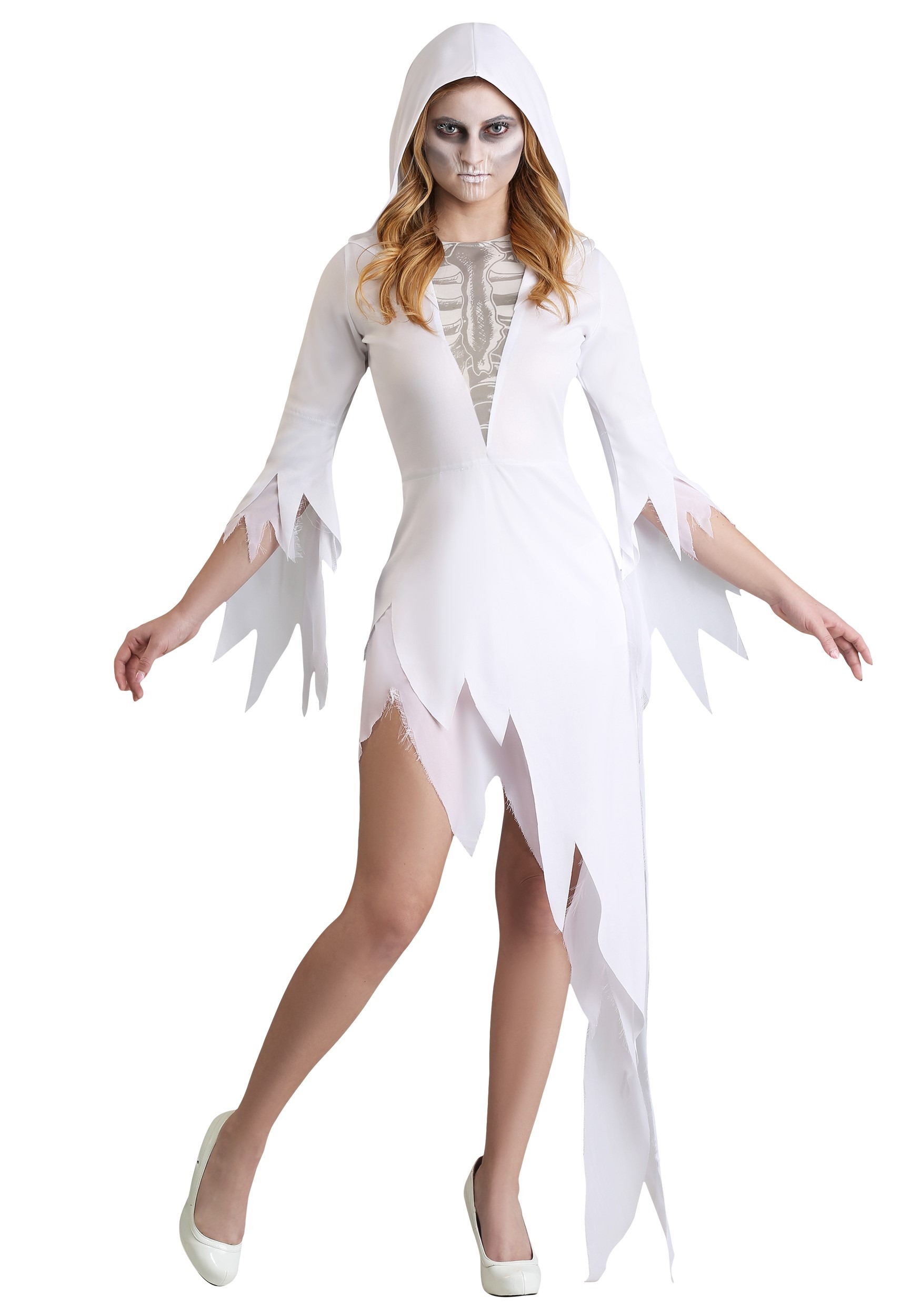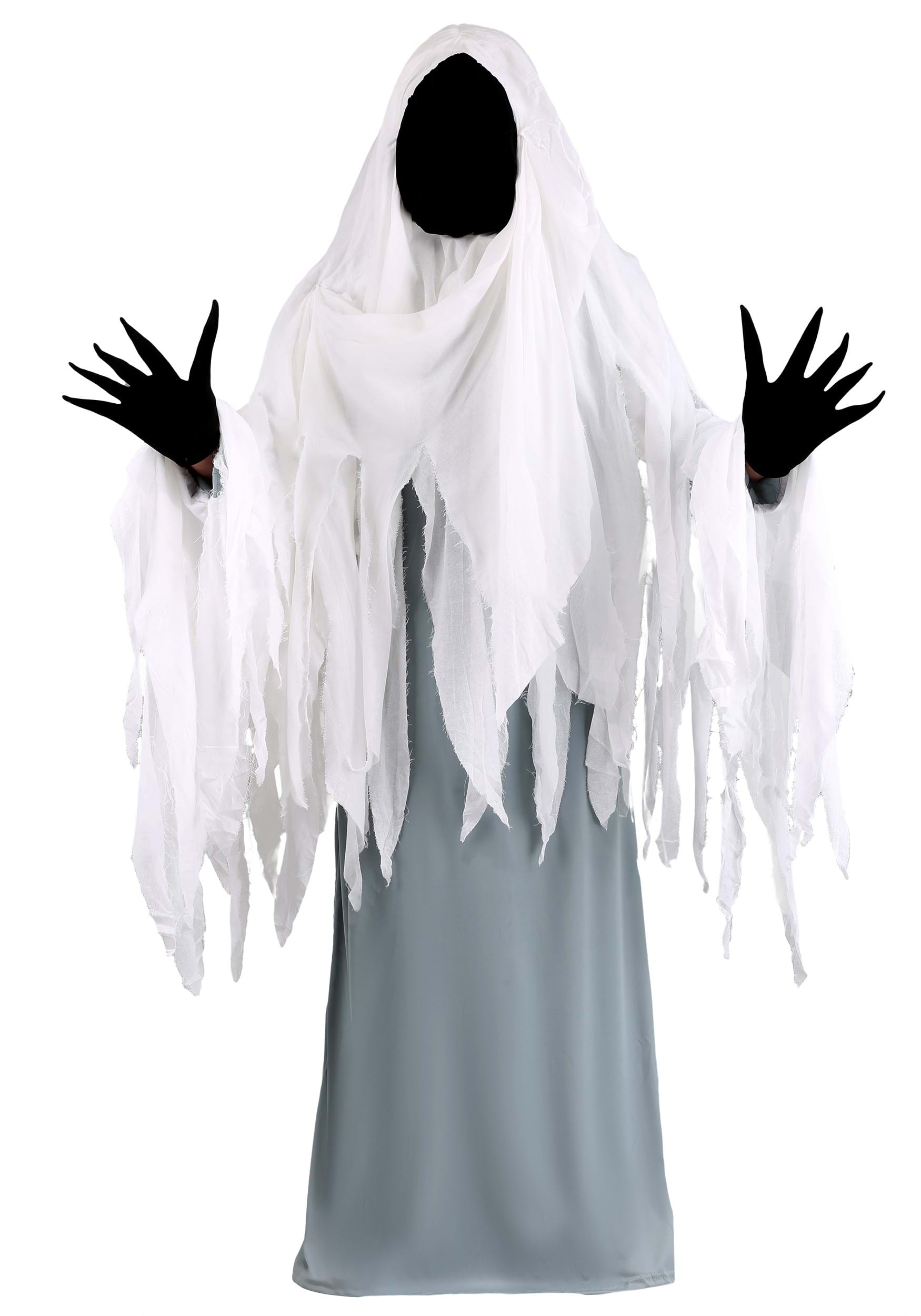p>In the realm of costumes that evoke both intrigue and fear, there is perhaps none as iconic as the ghost costume. With its ethereal qualities and timeless allure, this haunting ensemble has captured the imagination of countless individuals throughout history. Whether donned for Halloween festivities, theatrical performances, or simply to add an air of mystique to a gathering, the ghost costume possesses a palpable elegance that is both captivating and enigmatic.</p><p>The ghost costume, with its flowing white fabric and billowing form, embodies a spectral presence that can send shivers down one's spine. It is a manifestation of the unknown, representing a connection to the afterlife and the mysteries that lie beyond our mortal senses. The simplicity of this costume is what adds to its allure, as it allows for a multitude of interpretations and personal touches. Each individual who adorns it becomes a vessel for the supernatural, melding with the spirit world and embracing the chilling beauty that lies within.</p><p>The ghost costume's enduring popularity can be attributed to its ability to transcend time and culture. From ancient folklore to modern cinema, the image of a ghostly figure draped in flowing white has permeated our collective consciousness. It speaks to our fascination with the supernatural, our yearning for a connection to the spiritual realm, and our desire to explore the boundaries of our mortal existence. Through the ghost costume, we are granted a brief glimpse into the arcane, affording us the opportunity to explore the haunting elegance that lies within us all.</p><h3 id="history-of-ghost-costumes">History of https://telegra.ph/Unmasking-the-Enigma-Exploring-the-Ghost-Face-Costume-09-06 s</h3><p>Ghost costumes have long been an integral part of Halloween traditions and theatrical performances. The origins of these ethereal disguises can be traced back to ancient civilizations. In ancient Rome, for example, the festival of Lemuria involved the wearing of ghostly robes to appease and honor restless spirits. Similarly, in ancient Celtic folklore, costumes were donned to ward off malevolent spirits during the festival of Samhain.</p><p>Throughout the centuries, ghost costumes have continued to evolve and captivate people's imaginations. During https://notes.io/qDPth , for instance, ghostly figures were often depicted in theatrical performances known as "mystery plays," which served as a way to convey moral and religious messages. These early ghost costumes consisted of simple white garments adorned with tattered fabric or veils, effectively creating an otherworldly presence on stage.</p><p>In the Victorian era, the popularity of ghost stories and Gothic literature further deepened the fascination with ghostly attire. Ghost costumes became more elaborate, incorporating diaphanous fabrics, lace, and embellishments. The obsession with death and the supernatural during this time period allowed for an exploration of the eerie and macabre, reflected in the ghost costumes of the era.</p><p>Modern ghost costumes have been greatly influenced by the emergence of film and theater. The advent of special effects and the use of more realistic materials have added a new layer of sophistication to ghostly apparitions on screen and stage. From classic films like "The Ghost and Mrs. Muir" to contemporary ones like "Casper the Friendly Ghost," ghost costumes have continued to enchant and intrigue audiences of all ages.</p><p>Through the centuries, the ghost costume has remained a timeless symbol of the elusive and mysterious. Its ability to evoke fear, fascination, and even laughter has solidified its place in popular culture and Halloween celebrations worldwide. As we continue to explore the spectral realm, the ghost costume continues to be a hauntingly elegant and enduring tradition.###Symbolism and Cultural Significance</p><p>Ghost costumes have long been considered a symbol of both mystery and fear. With their ethereal appearance and ghostly white sheet, these costumes evoke a sense of the supernatural and the afterlife. They hold a unique place in cultural folklore, appearing in various traditions and ghost stories around the world.</p><p>In many cultures, the ghost costume represents a connection to the spirit realm. It is believed that wearing a ghost costume allows one to communicate with the spirits of the departed. This symbolism can be seen in practices such as Halloween, where people dress up as ghosts to honor and remember their ancestors.</p><p>The ghost costume also carries cultural significance in the realm of theatrical performances. From ancient Greek theater to modern-day stage productions, ghosts are a common presence in dramatic narratives. The white sheet draped over the performer creates an otherworldly image, heightening the sense of supernatural presence and creating a haunting ambiance.</p><p>Beyond the realm of folklore and theater, the ghost costume has also made its mark in popular culture. It has become an iconic symbol of Halloween, with its easily recognizable silhouette often depicted on decorations and merchandise. Ghost costumes have transcended cultural boundaries and become synonymous with the spooky and macabre festivities of the season.</p><p>In conclusion, the symbolism and cultural significance of the ghost costume are deeply rooted in our collective imagination. From communicating with spirits to theatrical performances and popular culture, the ghost costume continues to captivate and intrigue us, embodying the haunting elegance that has made it an enduring icon.</p><h3 id="modern-interpretations">Modern Interpretations</h3><img width="370" src=" "><p>In recent years, the ghost costume has undergone exciting modern interpretations. These contemporary versions of the traditional outfit serve as a fresh take on this classic and haunting attire.</p><p>One notable modern interpretation of the ghost costume is the avant-garde approach. Designers have experimented with bold and unconventional materials, such as metallic fabrics and transparent textiles. This refreshing twist adds a touch of mystery and ethereal allure to the ghostly ensemble, captivating both wearers and onlookers alike.</p><p>Another modern interpretation of the ghost costume leans towards the minimalist aesthetic. Embracing simplicity, these contemporary designs focus on clean lines and monochromatic hues. By stripping away unnecessary details, these costumes evoke a sense of otherworldly elegance, making a strong visual impact.</p><p>Lastly, technology has also found its way into the ghost costume realm. LED lights, fiber optics, and projection mapping are just a few of the innovative elements that have been incorporated into modern ghost costumes. These advancements allow wearers to create mesmerizing illusions, enhancing the haunting presence and captivating the imagination of those who witness these high-tech apparitions.</p><p>These modern interpretations of the ghost costume have breathed new life into a timeless icon. Whether avant-garde, minimalist, or technologically enhanced, these fresh perspectives continue to fascinate and enchant, proving that the ghost costume remains an enduring symbol of both elegance and spookiness.</p><img width="372" src="
"><p>In recent years, the ghost costume has undergone exciting modern interpretations. These contemporary versions of the traditional outfit serve as a fresh take on this classic and haunting attire.</p><p>One notable modern interpretation of the ghost costume is the avant-garde approach. Designers have experimented with bold and unconventional materials, such as metallic fabrics and transparent textiles. This refreshing twist adds a touch of mystery and ethereal allure to the ghostly ensemble, captivating both wearers and onlookers alike.</p><p>Another modern interpretation of the ghost costume leans towards the minimalist aesthetic. Embracing simplicity, these contemporary designs focus on clean lines and monochromatic hues. By stripping away unnecessary details, these costumes evoke a sense of otherworldly elegance, making a strong visual impact.</p><p>Lastly, technology has also found its way into the ghost costume realm. LED lights, fiber optics, and projection mapping are just a few of the innovative elements that have been incorporated into modern ghost costumes. These advancements allow wearers to create mesmerizing illusions, enhancing the haunting presence and captivating the imagination of those who witness these high-tech apparitions.</p><p>These modern interpretations of the ghost costume have breathed new life into a timeless icon. Whether avant-garde, minimalist, or technologically enhanced, these fresh perspectives continue to fascinate and enchant, proving that the ghost costume remains an enduring symbol of both elegance and spookiness.</p><img width="372" src=" ">
">
![[PukiWiki] [PukiWiki]](image/pukiwiki.png)